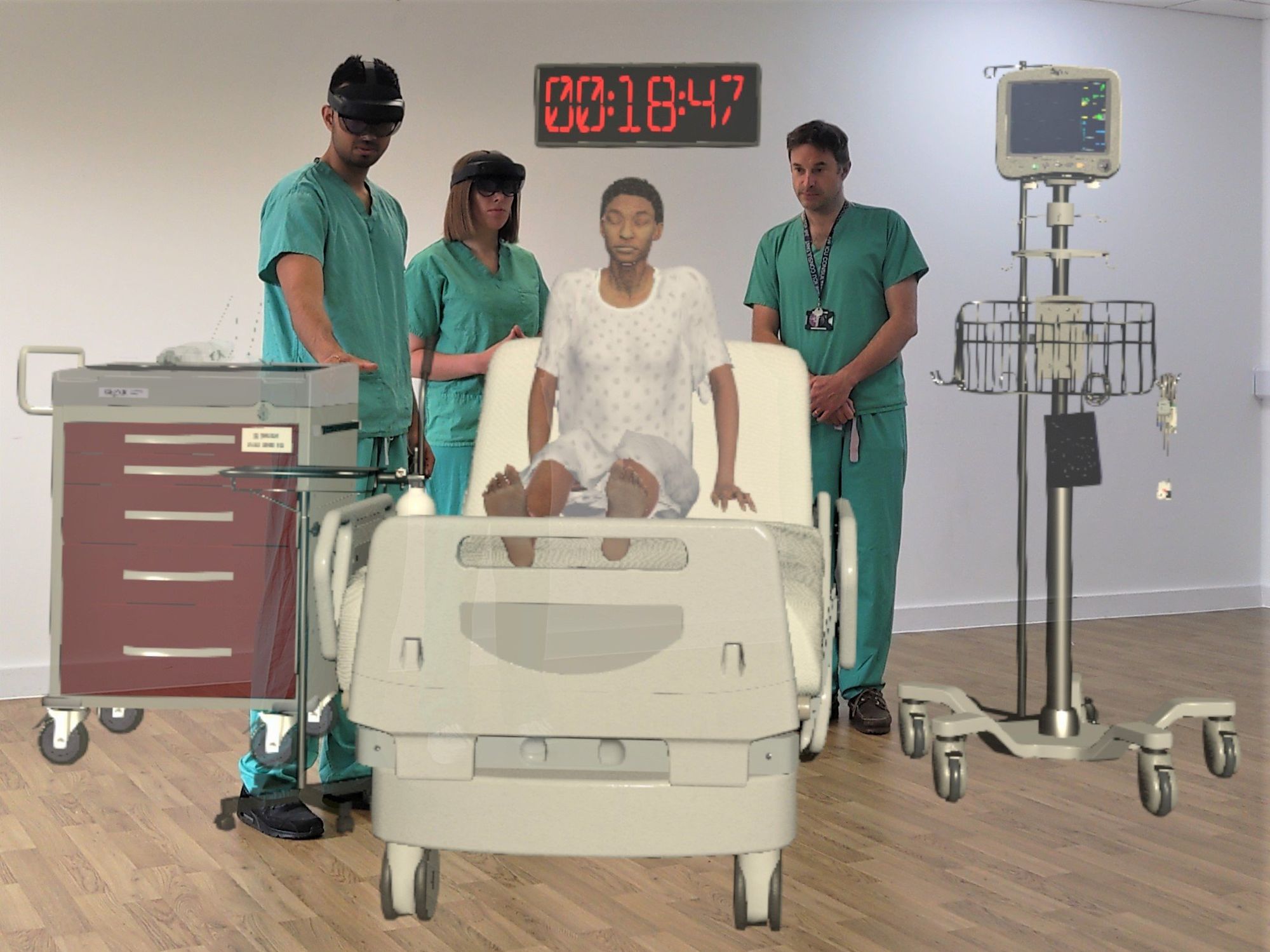GigXR’s Mixed-Reality Software Revolutionizes Simulated Training for Future Doctors
Samson Amore is a reporter for dot.LA. He holds a degree in journalism from Emerson College. Send tips or pitches to samsonamore@dot.la and find him on Twitter @Samsonamore.

Santa Monica-based GigXR is aiming to meld mixed reality with real life to create the most immersive training experience for medics that don’t otherwise have reliable access to cadavers.
GigXR was founded by David King Lassman in 2019 to build realistic mixed-reality simulations. According to CEO Jared Mermey who was previously an angel investor and joined the company in February 2022, using a mixed-reality learning module allows for “basically unlimited repetition,” and added, “there’s no marginal cost to using software.”
It’s an interesting proposal, particularly for members of the armed forces. Mock surgeries, Mermey said, often are time-consuming to set up and break down. Not to mention that there’s long been a shortage of cadavers to learn from. To that end, Mermey envisions a time where combat medic training is as simple as putting on a headset or picking up a smartphone.
Currently, GigXR makes mixed-reality simulations to be used on either Microsoft’s HoloLens 2 or iPhone and Android phones. Their proprietary software allows instructors and students using headsets to see both the people around them and an immersive physical environment, such as a mock surgical bay or operating room.
Mermey said GigXR is developing a library of training modules, some custom-built, like one for the U.S. Air Force’s 354th Medical Group based in Eielsen, Alaska. The Air Force signed a second Small Business Initiative Research contract worth $750,000 to use GigXR’s tech in late April after initially signing on in July 2021.
“It’d be hubris for any company to say, hey, we're going to build everything,” Mermey added. “So what we let our customers do is curate and manage a custom catalog of mixed reality experiences.” The simulations, nicknamed HoloScenarios, are clinical simulations that run the gamut. They include patients with respiratory illness, cardiac life support, and Holohuman, a mixed reality human cadaver.
GigXR’s simulations are both built in-house and with third-party partners, Mermey said. The company also has training modules that place the viewer up close to the heart, lungs and kidneys.
Mermey said GigXR is working with Michigan Medicine to create a neurology simulation that’s expected to go live by June. Much of the simulations are built using game development engines with the assistance of human artists and programmers.
The nature of some of the simulations, especially for the USAF, is graphic. Many of the combat medical scenarios are based on real battle wounds. Mermey said his designers have to have fortitude and “intestinal tolerance” to create the training modules. Besides the USAF, GigXR’s clients include the Kaiser Permanente School of Medicine, Leeds University and the University of Queensland.
The startup has raised $8.5 million since its launch, mainly from angel investors, Mermey said. He noted that starting the company shortly before a pandemic where everyone was embracing different ways to learn and work remotely was unintentional but advantageous timing.
“The market learned so much from COVID about how the way they teach and train and perform simulations needs to evolve, such that it can take advantage of these immersive technologies,” Mermey said.
Mermey unequivocally said he expects the mixed reality market to grow as more people embrace XR for education. “Particularly in medical nursing schools, incoming students expect this type of technology and they want to learn this type of technology,” he noted. “Therefore in order to recruit, [schools] need to implement it.”
Editor's note: This story has been updated to reflect the value of GigXR's second SIBR contract with the U.S. Air Force.
Samson Amore is a reporter for dot.LA. He holds a degree in journalism from Emerson College. Send tips or pitches to samsonamore@dot.la and find him on Twitter @Samsonamore.




 Image Source: Tinder
Image Source: Tinder Image Source: Apple
Image Source: Apple